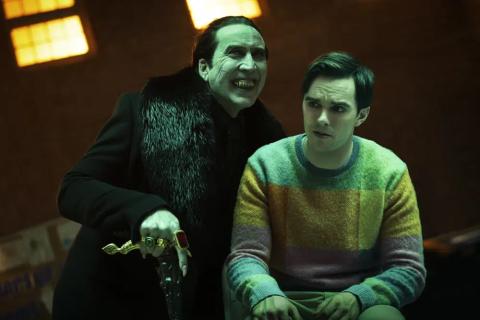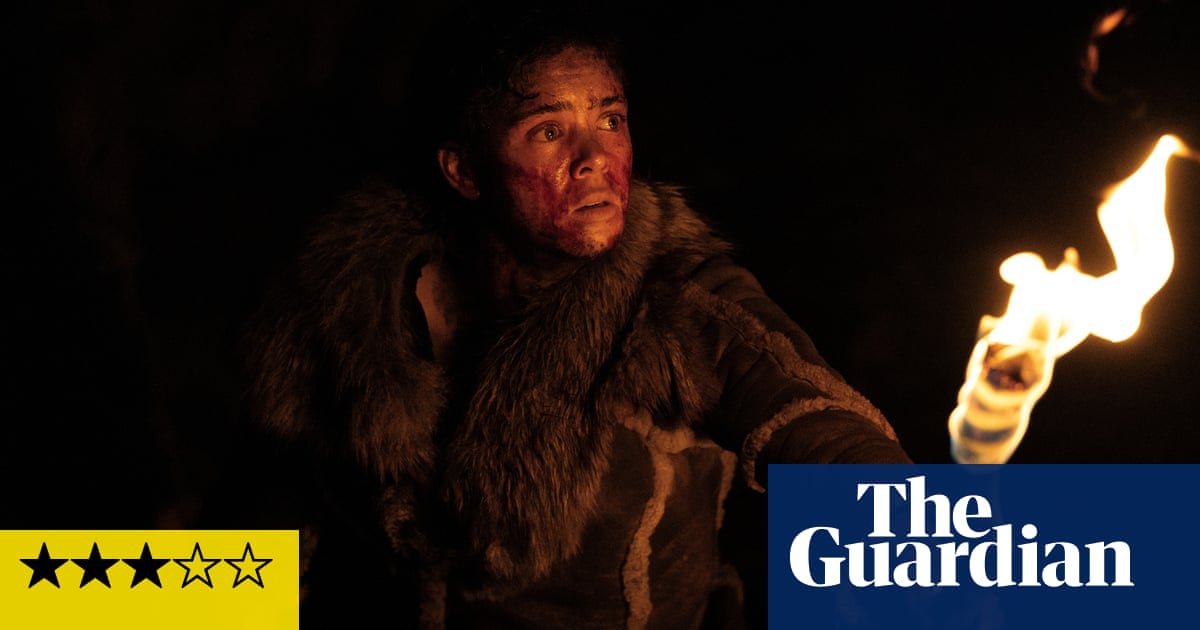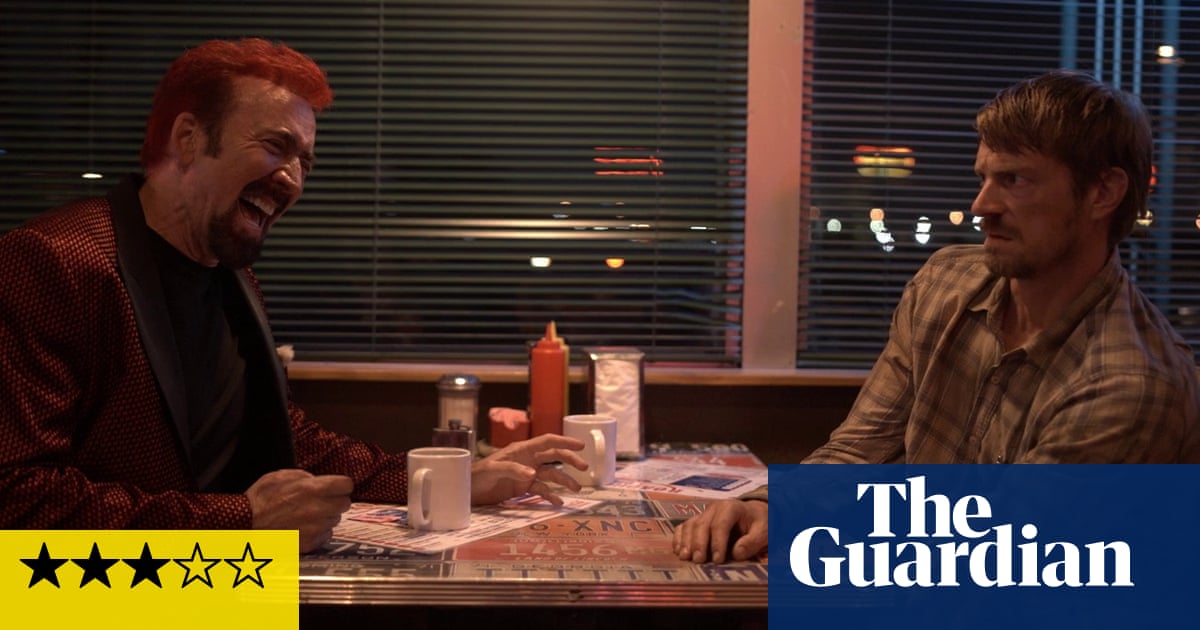
Her FBI colleagues describe Agent Lee Harker (Maika Monroe) as “highly intuitive”. And if the term sounds like federal agency code for something ominous and slightly sinister, that’s because it is. Harker might lack social graces (she’d sooner lurk alone in her coffin-like, wood-lined cabin than engage in small talk), but she has uncanny instincts when reading a crime scene. Or she does for some of the time, at least – it’s a gift that is selective and intermittent. But as jovial, gregarious Agent Carter (Blair Underwood) observes: “Half-psychic is better than not psychic at all.” Carter is clearly the glass-half-full type, particularly if the glass is half full of whisky. He has recruited Harker to work on a confounding cold case, hoping that her abilities may help to get the investigation moving again. What he couldn’t have anticipated is the fact that her presence acts as a catalyst, luring out the shadowy figure known as Longlegs (a thoroughly chilling Nicolas Cage) – a grotesque, glam rock-obsessed goblin of a man who is implicated in a series of mass murders that span decades.
And so the scene is set for the buzzy latest film from Osgood Perkins (Gretel & Hansel, I Am the Pretty Thing That Lives in the House), a grimly atmospheric FBI procedural with occult overtones that has been declared, in some of the more excitable corners of the internet, as the second coming of The Silence of the Lambs. Of course, hype is the kind of spotlight that rarely flatters its subject, and these kinds of comparisons do the film no favours at all. Longlegs is not in the same league as Jonathan Demme’s masterpiece, or for that matter Seven, another frequent comparison. Among other things, the writing – specifically a crude chunk of third-act exposition – lets it down. But still, there is plenty to admire in this oppressively brooding and superbly acted chiller. To paraphrase Carter, perhaps half-great is better than not great at all.
One of the film’s most impressive assets is Monroe, who, having starred in It Follows and Watcher, is among the few actors who can match Mia Goth in the ranks of this generation’s finest genre performers. Harker is stonily antisocial with her colleagues, a woman most at ease in the murky reaches of her own mind. But she’s a gifted agent, blessed with the kind of unwavering focus that results from being far more at ease unpicking the ritualistic details of a serial killer’s modus operandi than you are going for drinks with your workmates. When Carter forces her to socialise, hauling Harker away from the blood-red carpet on which she has spread the clues of the case and into a bar, she sits rigidly upright, hands clasped, clearly itching to get away from the boozy good times and back to work. Her focus pays off; with a little help from a friend, she cracks the killer’s coded messages and identifies a pattern to the deaths, mapping them on to an inverted triangle, a symbol with occult significance.
Having created, in Longlegs, a potentially iconic horror villain, the picture attempts to broaden the peril
And this is one of the film’s other key strengths. Perkins clearly has an eye for a striking image. At first, we are struck by a recurring motif of obsessive symmetry within each shot, and an aspect ratio that switches between the tight little box reminiscent of home movie footage for a 70s flashback to a full rictus grin of a widescreen frame for the main story, set in the 90s. But once Harker has identified the satanic emblem, the screen is full of angles and triangles (created by shooting into the corners of rooms or foregrounding the zigzag of a staircase). Some of these shapes point upwards; more often they are inverted, perhaps subliminally signposting “the man downstairs”, as Longlegs coyly refers to the devil. Even the film’s structure takes a three-sided form, with the story neatly divided into three chapters. There’s an unexpected elegance to this window into unimaginable evil.
The framing is slyly effective when it comes to introducing Longlegs himself. We first see him from a child’s perspective, his eyes concealed as we focus on his mouth and the ghastly voice that comes out of it. Moist and querulous, it’s the kind of voice that sounds overloaded with spittle and joyful malice. With his powdery complexion and flapping hands, Cage has never been more chilling.
But this ultimately ties into one of the niggling issues with Longlegs. Having created a potentially iconic horror villain, the picture attempts to broaden the peril to encompass secondary malevolent characters. But since there is nothing else in the movie remotely as terrifying as Cage singing Happy Birthday and cackling like a maniac while wearing a rubbery facial prosthesis, its bloody final act seems oddly anticlimactic.
In UK and Irish cinemas












